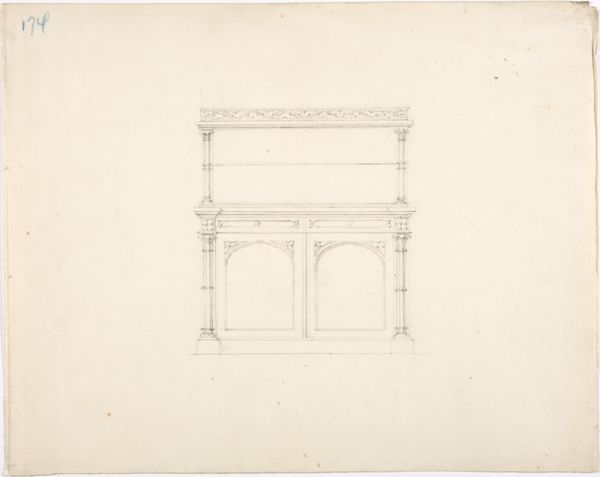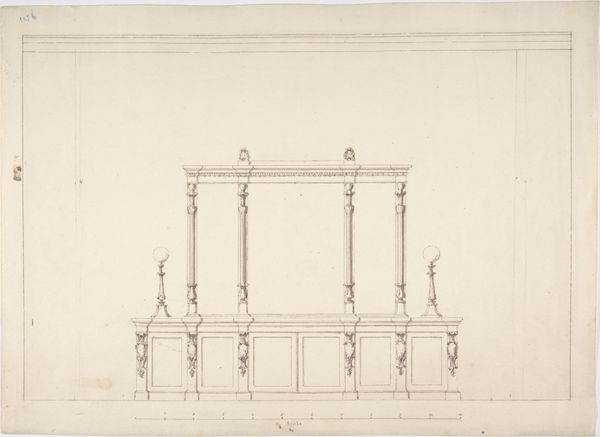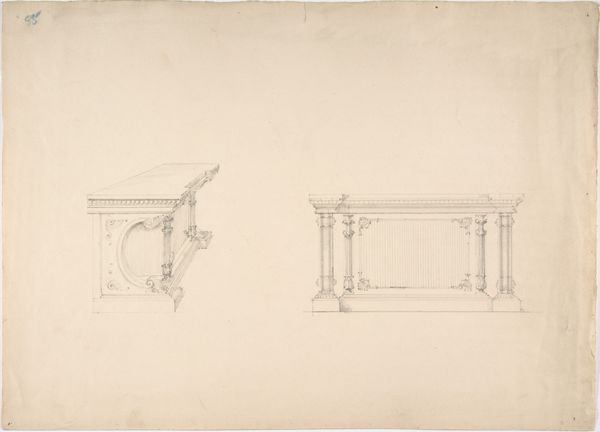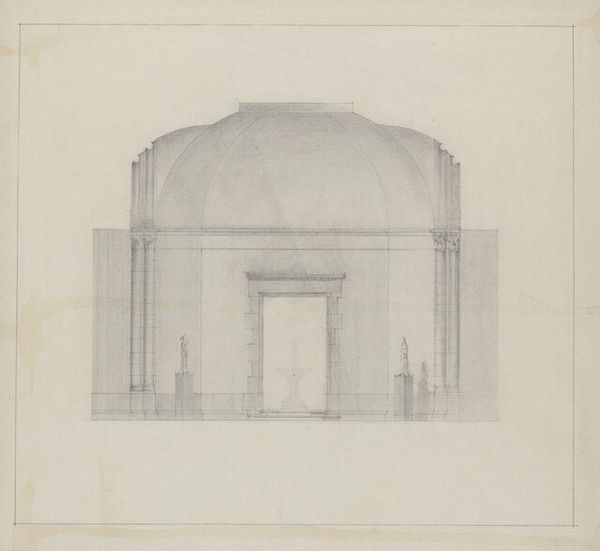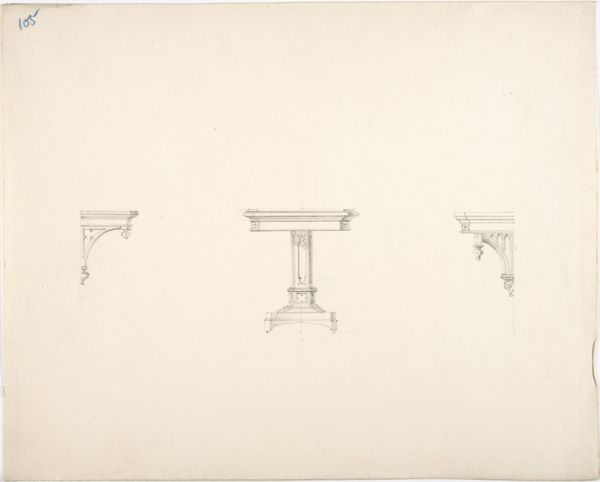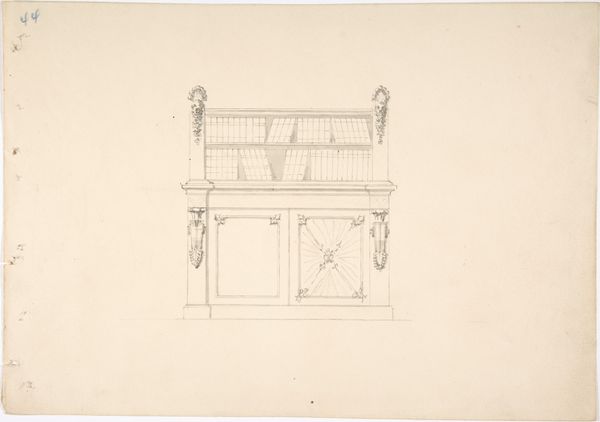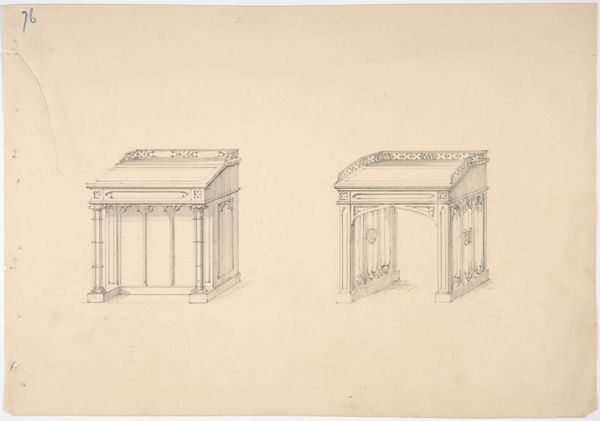
Design for an Octagonal Gothic Pedestal Table with Pendentives: Elevation and Plan 1800 - 1850
0:00
0:00
drawing, print, etching, pencil
#
drawing
#
table
#
neoclacissism
# print
#
etching
#
etching
#
geometric
#
pencil
Dimensions: sheet: 8 9/16 x 12 5/16 in. (21.7 x 31.2 cm)
Copyright: Public Domain
Editor: Here we have "Design for an Octagonal Gothic Pedestal Table with Pendentives: Elevation and Plan," dating from around 1800-1850 by an anonymous artist, rendered in pencil, etching, and print. It’s strikingly precise, almost clinical in its depiction. What do you make of it? Curator: I see a direct relationship to labor and the process of design. This isn’t about the finished product; it's about the material reality of envisioning an object. Consider the paper itself: its quality, where it came from, and who produced it. Editor: That's a good point; I hadn’t really thought about the paper. I was more focused on the drawing itself. Curator: Right, and what tools were used to make this drawing? Pencils, etching implements... each choice reflects a decision about material and process. Where did the pencil originate from? And were these mass produced at that time? It speaks to the evolving nature of production during this period, doesn't it? How readily were materials available? Editor: It does make me wonder about the intended audience. Was this for a craftsman, a patron, or perhaps for an educational purpose? Curator: Precisely! This object challenges traditional hierarchies, placing design and craft on a more equal footing. Is this ‘high art’ or simply a practical design blueprint? Editor: I guess I was initially drawn to the geometric precision and didn't really think of it in the context of materials. Curator: Exactly! This kind of drawing reveals a crucial relationship between intellectual conception and the eventual physical realization, or lack thereof. Thinking this way reveals this drawing to be more of a social object rather than art for arts sake. Editor: I’ve never really considered the social and industrial elements inherent to such a design before. I'll never look at preparatory drawings the same way again. Curator: Agreed, by centering our analysis on the production means of such a drawing we have a whole new approach to think of how an idea can take shape in social context.
Comments
No comments
Be the first to comment and join the conversation on the ultimate creative platform.


